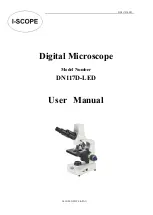
INSTRUMENT
DESCRIPTION
Cell Observer SD
Functional Principle
Carl Zeiss
M60-2-0021 e 01/2009
423638-7044-001
21
2.2
Functional Principle
The confocal CSU-X1 spinning disc unit scans
hundreds of image points simultaneously.
Compared to conventional spot scanners, distinctly
higher image rates can thus be achieved. For
detection of fluorescence, EM CCD cameras of
high quantum efficiency can be used, which
reduces the level of illumination intensity and
phototoxicity to a required minimum.
A CSU-X1 confocal scanner includes a so-called
Nipkow rotating disc with thousands of pinholes
arranged in a spiral-like pattern. By illumination
and through-disc detection, just as many image
points can be imaged concurrently. Because the
disc rotates, the sample surface is completely
scanned a bit at a time. After rotation of 30°, the
entire visual field of the camera has been fully
imaged once.
Since a large amount of incident light would be
blocked by the areas between the pinholes, the
scanning disc unit is equipped with a special
tandem disc setup. The Nipkow disc acts in unison
with a preceding second mechanically coupled
disc. It contains micro lenses to exactly focus and direct the incident bundle of excitation light through
the subsequent pinholes for increased light efficiency.
For optimal adaptation to the various operating requirements, the CSU-X1 scanning disc unit is available
at different configuration levels.
Spin speed:
Depending on the dynamics of an application, the Nipkow disc’s spin speed may vary. Available options
are:
−
a fixed rotation speed of 1800 rpm,
−
variable speed settings from 1500 to 5000 rpm
Filter wheels:
Fast optional filter wheels reduce emission filter switch times to as little as 33 ms (purely mechanical
switching time) between neighbouring positions. Combined with AOTF-based selection of a desired
excitation wavelength, this facilitates express multi-channel experiments.
Dual camera operation:
The dual camera option provides two cameras for concurrent image acquisition in two different emission
ranges. This prevents a time offset between a pair of channels and helps avoid inaccuracies during co-
localization or ratio calculation tasks.
Fig. 2-1
Schematic view of CSU-X1 spinning
disc unit
Summary of Contents for Cell Observer SD
Page 1: ...l j l pa...
Page 68: ......
















































